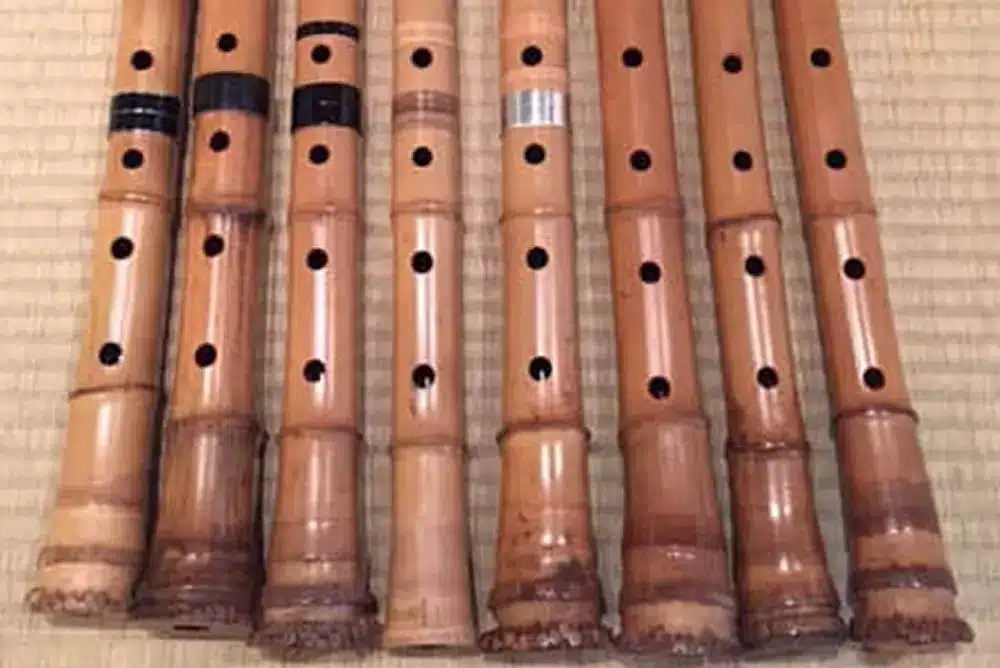
01 Feb Exploring the Melodic Magic of Bamboo Flutes
Bamboo flutes are a cornerstone of Japanese musical tradition, resonating with history, artistry, and spiritual depth. Their distinctive sound captures the hearts of listeners and reflects the serene beauty of Japan’s cultural heritage. From ancient temples to modern concert halls, these flutes hold an enduring charm that inspires musicians and enthusiasts alike.
The History and Cultural Significance of Bamboo Flutes in Japan
The roots of bamboo flutes in Japan stretch back over a thousand years. Instruments like the shakuhachi were introduced during the Nara period (710–794) and quickly became an integral part of Japanese court music and Zen Buddhism. The shakuhachi, often used in meditative practices, embodies the philosophy of mindfulness and spiritual reflection. It has become more than a musical instrument—it symbolizes tranquility and cultural identity.
Types of Bamboo Flutes Used in Japanese Music
Japan boasts a variety of bamboo flutes, each with its unique role in traditional music:
- Shakuhachi: Known for its hauntingly beautiful sound, this end-blown flute is the most famous. It is a staple of both solo performances and traditional ensembles.
- Shinobue: A side-blown flute, often heard in festive and ceremonial settings, adding a lively energy to traditional Japanese festivals.
- Ryūteki: Part of gagaku (ancient court music), this transverse flute connects to Japan’s imperial past.
Techniques for Playing Bamboo Flutes
Mastering bamboo flutes requires a blend of technical skill and emotional expression. Players employ unique techniques like meri and kari (adjusting pitch by angling the flute) and muraiki (controlled bursts of breath for dramatic effect). The breath control and fingerwork demanded by these flutes make them a true test of a musician’s artistry and patience.
Construction and Craftsmanship of Bamboo Flutes
The creation of a bamboo flute is an art form in itself. Artisans select high-quality madake bamboo, harvested and cured with precision. Crafting a shakuhachi involves intricate processes, including boring, shaping, and tuning. Every flute is a unique work of art, reflecting the craftsman’s dedication and expertise. This meticulous craftsmanship ensures the flute’s tonal purity and expressive potential.
Famous Bamboo Flute Compositions and Performances
Bamboo flutes have inspired countless iconic compositions. Pieces like “Shika no Tōne” (The Distant Cry of Deer) showcase the shakuhachi’s ability to evoke the natural world, while traditional festival tunes highlight the shinobue’s joyous character. Renowned performances, such as those by the legendary Katsuya Yokoyama, have cemented the bamboo flute’s place in the global music scene.
Role in Traditional Ensembles and Modern Music
In traditional ensembles, bamboo flutes often complement other instruments like the koto and shamisen, weaving together rich sonic tapestries. In modern music, they have found a new voice, blending seamlessly with genres like jazz, pop, and film scores. This integration illustrates their versatility and timeless appeal.
Spiritual and Meditative Uses
Bamboo flutes, particularly the shakuhachi, hold a profound spiritual dimension. They are central to suizen (blowing meditation), where the act of playing becomes a form of mindfulness. The soft, resonant tones encourage introspection, offering a gateway to inner peace.
Preservation of Bamboo Flute Traditions
In contemporary Japan, efforts to preserve bamboo flute traditions are thriving. Schools, festivals, and dedicated musicians ensure these instruments remain vibrant in modern culture. Through these efforts, the next generation is introduced to bamboo flutes’ melodic magic and cultural significance.
A Living Legacy
The bamboo flute is more than a musical instrument—it is a living legacy of Japan’s artistic and spiritual heritage. Whether you are listening to a meditative shakuhachi solo or the vibrant melodies of a shinobue at a festival, the sound of bamboo flutes transports you to a place of beauty and reflection. Their enduring presence reminds us of the harmony between nature, music, and the human spirit.


